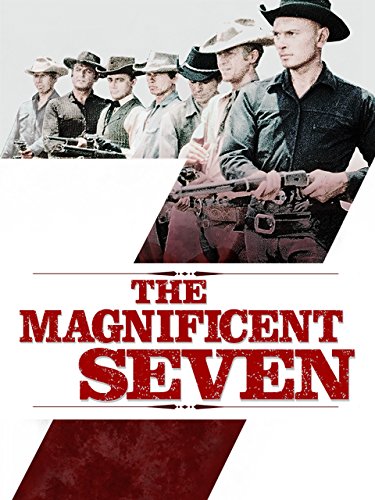Though it has to forever compete with The Searchers and High Noon, few Western films will ever have the impact of The Good, The Bad and The Ugly, the final film in Sergio Leone’s “Dollars Trilogy” and the most famous Spaghetti Western (that is, films in the American Western style made by Italian directors) of all time. It catapulted Clint Eastwood to super-stardom, changed the way countless directors thought about the genre, and continues to influence film to this day. So, in celebration of the film’s 50th anniversary, here are a dozen facts about the legendary tale of gunslingers on the hunt for treasure.
1. THE FILM’S STORY WAS IMPROVISED IN A MEETING.
In late 1965, A Fistful of Dollars and its sequel, For a Few Dollars More, were not yet available in the United States, but their success in Europe was not lost on American film executives. Hoping to capitalize on the buzz and secure a lucrative American distribution deal, director Sergio Leone and writer Luciano Vincenzoni brought Arthur Krim and Arnold Picker—two United Artists executives—to Rome, where they were treated to a screening of the second film at a massive cinema where For a Few Dollars More was playing to enthusiastic crowds.
The American executives were interested, and agreed to pay $900,000 for the American rights (a huge amount at the time, particular considering the fact that Eastwood was not yet the massive star he’d become), but as the principals gathered to sign the deal, Picker asked if Leone, Vicenzoni, and producer Alberto Grimaldi had thought about what they’d be doing next, as he was hoping for yet another Western to package with the first two films. The three men hadn’t thought about it before, but Vincenzoni thought quickly, and improvised an idea.
Buy Silver at Discounted Prices
“I don’t know why, but the poster came into my mind—Il buono, il brutto, il cattivo. ‘The Good, The Bad and the Ugly,’” said Vincenzoni. “It’s the story of three bums that go around through the Civil War looking for money.”
 The Good, The Bad, and...
Buy New $0.99
(as of 09:30 UTC - Details)
The Good, The Bad, and...
Buy New $0.99
(as of 09:30 UTC - Details)
Based on that short pitch, Picker agreed to fund the film, and the movie was on its way. Eventually, all three films were released in America over the course of a single year.
2. CLINT EASTWOOD’S SALARY DEMANDS DELAYED FILMING.
Eastwood initially agreed to return for a third film, but was disappointed when he read the script and discovered that he’d be sharing the screen with two other major players: Eli Wallach and Lee Van Cleef (who’d already co-starred with Eastwood in For a Few Dollars More). In Eastwood’s view, the increasing reliance on an ensemble was crowding him out of the movie.
“If it goes on this way, in the next one I will be starring with the American cavalry,” Eastwood reportedly said in response to the story.
Negotiations for the third film fell apart, and Eastwood’s agents and publicist worked hard to bring him back to the production. What’s most interesting about this was that, because the films still had not come out in America, Eastwood was not yet the huge star that we know him to be today, so he had less negotiating pull than you might expect. Still, his agents were ultimately able to get him a $250,000 salary for the film (more than the entire budget of A Fistful of Dollars), plus 10 percent of the profits when the film was finally released in America. As a cherry on top, he was also promised a new Ferrari. Of course, he ultimately accepted the job.
3. ELI WALLACH SAID YES AFTER SEEING ONLY MINUTES OF THE PREVIOUS FILMS.
For the role of Tuco, a.k.a. “The Bad,” Leone initially wanted Italian actor Gian Maria Volontè, who’d played villainous roles in both previous films. When Volontè turned the role down, Leone turned to American actor Eli Wallach, who was at the time best known for his role in The Magnificent Seven. Wallach was skeptical of making a Western with, of all people, an Italian director, but a screening was arranged in an attempt to convince him. After watching just minutes of one of the first two “Dollars” films, Wallach told the projectionist that he could turn the movie off, and accepted the job.
 A Fistful of Dollars
Buy New $4.99
(as of 09:30 UTC - Details)
A Fistful of Dollars
Buy New $4.99
(as of 09:30 UTC - Details)
4. SERGIO LEONE DID NOT SPEAK ENGLISH, AND THUS COULD NOT SPEAK DIRECTLY TO EASTWOOD.
By the spring of 1966, Sergio Leone had made two films with Eastwood, one film with Van Cleef, and was about to make a third film along with another American actor: Eli Wallach. Despite this, Leone did not speak English, and relied on an interpreter. Wallach, however, was able to communicate with Leone in French, in which the director was fluent.
5. LEONE DID COPIOUS RESEARCH.
Because the film was set during the Civil War, Leone wanted to preserve a certain sense of accuracy, and went to America to research the film. Among his inspirations were Library of Congress documents and the photographs of legendary photographer Mathew Brady. The film is not completely historically accurate, though. It features the use of dynamite before that particular explosive was invented.
 The Magnificent Seven
Buy New $0.99
(as of 09:35 UTC - Details)
The Magnificent Seven
Buy New $0.99
(as of 09:35 UTC - Details)
 For a Few Dollars More
Buy New $0.99
(as of 05:55 UTC - Details)
For a Few Dollars More
Buy New $0.99
(as of 05:55 UTC - Details)
 Amazon.com $25 Gift Ca...
Buy New $25.00
(as of 04:05 UTC - Details)
Amazon.com $25 Gift Ca...
Buy New $25.00
(as of 04:05 UTC - Details)
 Amazon.com $50 Gift Ca...
Check Amazon for Pricing.
Amazon.com $50 Gift Ca...
Check Amazon for Pricing.





